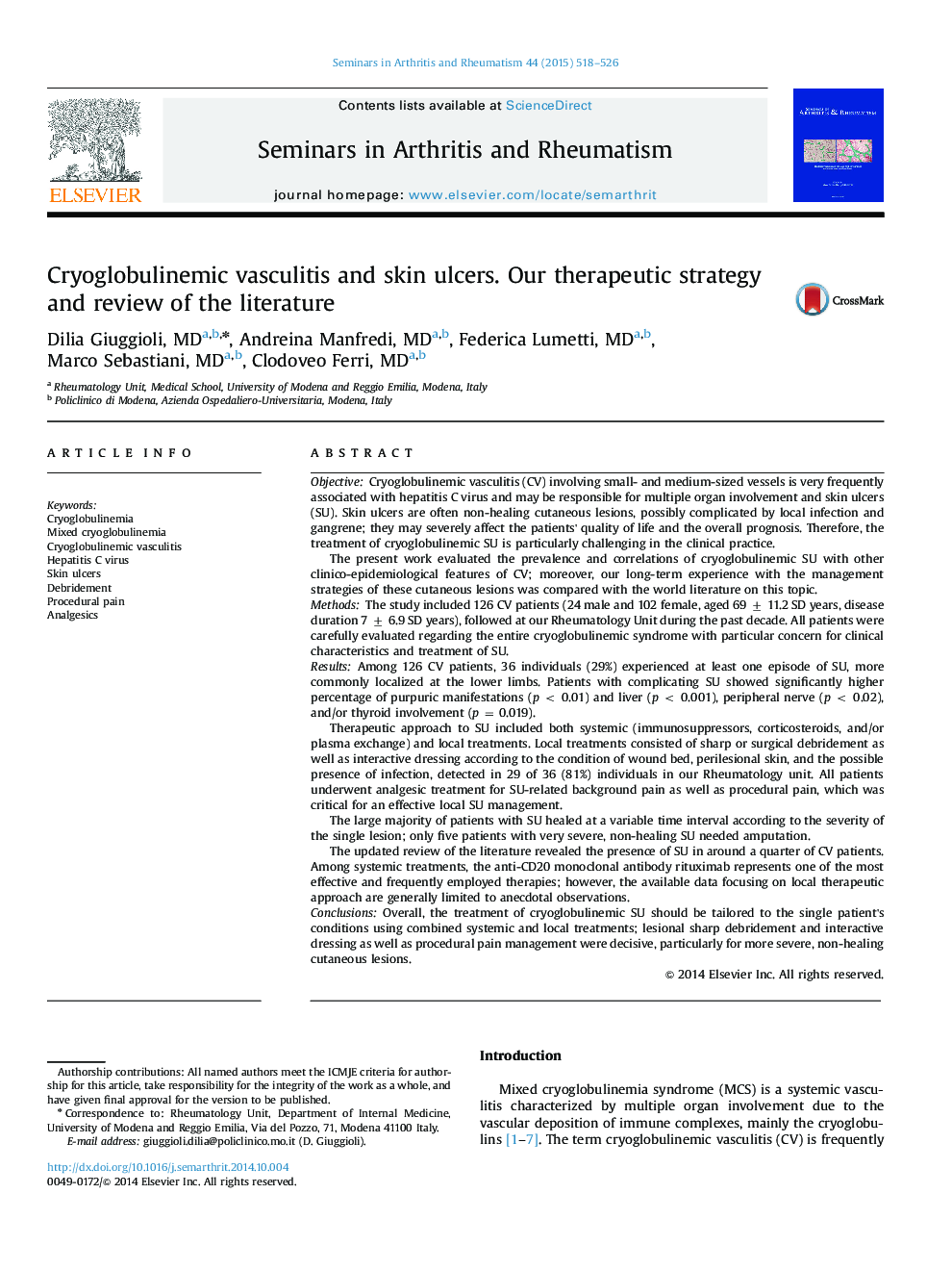| کد مقاله | کد نشریه | سال انتشار | مقاله انگلیسی | نسخه تمام متن |
|---|---|---|---|---|
| 2771348 | 1151740 | 2015 | 9 صفحه PDF | دانلود رایگان |

ObjectiveCryoglobulinemic vasculitis (CV) involving small- and medium-sized vessels is very frequently associated with hepatitis C virus and may be responsible for multiple organ involvement and skin ulcers (SU). Skin ulcers are often non-healing cutaneous lesions, possibly complicated by local infection and gangrene; they may severely affect the patients׳ quality of life and the overall prognosis. Therefore, the treatment of cryoglobulinemic SU is particularly challenging in the clinical practice.The present work evaluated the prevalence and correlations of cryoglobulinemic SU with other clinico-epidemiological features of CV; moreover, our long-term experience with the management strategies of these cutaneous lesions was compared with the world literature on this topic.MethodsThe study included 126 CV patients (24 male and 102 female, aged 69 ± 11.2 SD years, disease duration 7 ± 6.9 SD years), followed at our Rheumatology Unit during the past decade. All patients were carefully evaluated regarding the entire cryoglobulinemic syndrome with particular concern for clinical characteristics and treatment of SU.ResultsAmong 126 CV patients, 36 individuals (29%) experienced at least one episode of SU, more commonly localized at the lower limbs. Patients with complicating SU showed significantly higher percentage of purpuric manifestations (p < 0.01) and liver (p < 0.001), peripheral nerve (p < 0.02), and/or thyroid involvement (p = 0.019).Therapeutic approach to SU included both systemic (immunosuppressors, corticosteroids, and/or plasma exchange) and local treatments. Local treatments consisted of sharp or surgical debridement as well as interactive dressing according to the condition of wound bed, perilesional skin, and the possible presence of infection, detected in 29 of 36 (81%) individuals in our Rheumatology unit. All patients underwent analgesic treatment for SU-related background pain as well as procedural pain, which was critical for an effective local SU management.The large majority of patients with SU healed at a variable time interval according to the severity of the single lesion; only five patients with very severe, non-healing SU needed amputation.The updated review of the literature revealed the presence of SU in around a quarter of CV patients. Among systemic treatments, the anti-CD20 monoclonal antibody rituximab represents one of the most effective and frequently employed therapies; however, the available data focusing on local therapeutic approach are generally limited to anecdotal observations.ConclusionsOverall, the treatment of cryoglobulinemic SU should be tailored to the single patient׳s conditions using combined systemic and local treatments; lesional sharp debridement and interactive dressing as well as procedural pain management were decisive, particularly for more severe, non-healing cutaneous lesions.
Journal: Seminars in Arthritis and Rheumatism - Volume 44, Issue 5, April 2015, Pages 518–526